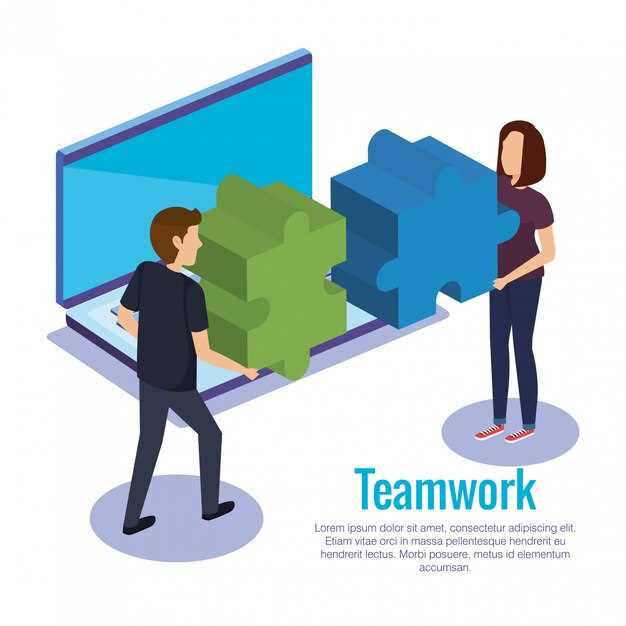Begin by narrowing your niche to a precise client profile and establishing a repeatable intake and qualification workflow. This setup converts vague inquiries into scheduled consultations and predictable engagements, while cutting admin time through templates and automated reminders.
Outline outreach around three channels: referrals from past clients, partnerships with relationship coaches and professional networks, and content-driven lead generation. Target 15-25 qualified inquiries per month and aim for a 30-40% inquiry-to-consultation conversion.
Craft a concise 60-minute consult framework that uncovers goals, budget, and timing. Open with shared values, probe the top three obstacles clients describe, and close with a clear next step and a tailored proposal.
Track core metrics such as inquiry-to-consultation rate, average engagement duration, and client lifetime value. Expect engagements to span 4-6 months with revenue per client in the 3,000-6,000 range depending on package depth. Maintain a referral share of 20-30% to stabilize growth.
Scale by standardizing the client process: intake form, discovery sessions, matching sessions, progress reviews, and post-engagement follow-up. Lean on a simple CRM and calendar automation to keep every step documented and deliver consistent outcomes.
Define your niche and client personas
Begin with narrowing to two client segments and draft detailed personas for each. For each segment, specify age range, location type, occupation, income band, primary dating goal, and the pace they expect for introductions.
Collect data from at least 40 intake forms and 20 discovery calls to validate assumptions. Use clear filters: age bands 25–34, 35–44, 45–54; markets (major metro vs. secondary cities); income tiers ($75k–$125k, $125k–$250k, above $250k). Track the share of demand per segment and the level of willingness to invest in curated introductions.
Create persona sheets with fields: name, age, job, city, income band, relationship goal, deal-breakers, preferred communication style, scheduling constraints, privacy expectations, and success indicators.
Align service scope with pricing across three tiers: Starter, Core, and Premium. Starter includes a one-time intake fee of $350; up to 6 introductions per month, with a monthly retainer around $900. Core adds a higher intake and up to 12 introductions per month, typically $1,600 per month after a $600 setup. Premium offers unlimited introductions, monthly around $2,900, with a $1,200 setup and optional quarterly VIP events.
Run a six-client pilot at Starter for eight weeks; collect feedback on response time, clarity of matches, and overall satisfaction. Track net promoter score, time-to-first introduction, and readiness signals to refine persona definitions and service scope.
Develop a persona-aligned content plan: twelve monthly topics, two posts per week on professional networks and social profiles, and one local meetup or virtual session each month. Seek collaborations with two event venues or partner organizations to extend reach to the intended groups.
Track metrics such as monthly inquiries, consult bookings, return for follow-up conversations, client retention after three to six months, and referral rate. Targets include 25–50 inquiries per month, 40–60% of inquiries converting to consultations, 50–70% of consultations progressing to introductions, 75–85% retention after six months, and 15–25% of clients referring others.
Example personas: Mira, 38, product manager in a major city, income around $140k, seeks a long-term relationship, prioritizes discretion, prefers concise updates and weekday calls; Diego, 30, design professional in a growing region, income about $90k, open to a serious relationship with shared values, comfortable with in-person meetups on weekends; Priya, 42, founder in another large market, income near $180k, values thorough screening and compatible life goals, expects structured introductions and clear timelines.
Establish a repeatable onboarding and matching workflow
Implement a fixed 7-step onboarding checklist and a 5-stage matching workflow, stored in a centralized SOP and version-controlled.
The 7 steps are: 1) intake form completed by the client; 2) identity and consent verification; 3) goal discovery call to capture objectives, timing, and decision-makers; 4) profile audit with a privacy brief and data normalization; 5) capture preferences for roles, industries, locations, and compensation; 6) calendar setup, welcome email, and kickoff; 7) first touchpoint template and notification to the team.
The 5-stage matching workflow is: 1) need assessment and scoring using a 12-point rubric; 2) candidate pool tagging by skills, location, availability, and seniority; 3) automated short list generation using the rubric; 4) outreach script, scheduling, and confirmations; 5) post-match wrap-up with feedback and data capture.
Templates and data fields: use a single intake form with fields for company size, industry, role type, seniority, location, budget, decision-maker, timeline, and success metrics; create a 2-page candidate brief per match (summary, fit score, red flags); draft a one-page intro email with a clear value proposition and a calendar link; store all consent records and data access permissions in the CRM with timestamps.
Tech stack and automation: CRM with tagging, form intake, calendar integration, autoresponders, and a shared document repository. Automations include: when intake is submitted, create a client record, assign an onboarding owner, and set next tasks; auto-reminders at 24 and 48 hours; when a match is approved, trigger calendar invites and notify both sides.
Governance and accountability: assign an onboarding owner per client; implement a two-person sign-off before any live outreach; maintain an SLA for response times: intake acknowledged within 2 hours, first candidate contact within 1 business day, match confirmation within 3 days of kickoff; keep audit trails and conduct monthly reviews of outcomes.
Metrics and cadence: track onboarding completion rate, average time to initial match, first-contact response rate, interview-to-offer conversion, and CSAT scores of 4.5/5 or higher. Use dashboards updated weekly and monthly stakeholder reports. Targets include onboarding completion in 48 hours in 90% of cases; first match within 5 business days; outreach response rate above 25%; satisfaction at or above 4.5/5.
Maintenance and improvement: run quarterly process audits, document lessons learned, and adjust the SOP accordingly; conduct 1 A/B test per quarter on outreach templates; preserve a change log and publish updated guidelines to the team within 24 hours of approval.
Package services, set pricing, and secure client agreements
Offer three clearly defined service bundles: Core, Plus, and Elite. Core includes a 60-minute intake call, vetting and curating up to six candidate profiles, two personalized introductions, and a 30-day post-delivery review. Plus adds thorough profile optimization, five introductions, a 60-minute coaching session, and outreach templates. Elite provides 12 profiles, weekly check-ins for four months, date planning assistance, and priority access to the team. Pricing: Core 1,500 USD, Plus 3,500 USD, Elite 6,000 USD.
Pricing framework blends predictability with value. Use fixed tiers plus optional add-ons such as VIP concierge support, enhanced outreach review, or late-evening availability. Example: Core 1,500 USD; Plus 3,500 USD; Elite 6,000 USD. Payment schedule: Core 50% at signing, 50% after delivery of the initial profiles. Plus 60% at signing, 40% after the five introductions. Elite 70% at signing, 30% after the four-month engagement. Include a non-refundable retainer equal to 20% if cancellation occurs after work begins.
Secure client agreements with a concise contract that defines scope, deliverables, milestones, and payment terms; include confidentiality, data handling, and a clause for replacements if targets aren’t met. Add an optional exclusivity clause for Elite tier. Use electronic signatures via a trusted platform; store signed copies in a secure client portal; require sign-off before any introductions.
Operational guidelines: set a deliverables calendar; if a candidate is not suitable, provide one replacement within 30 days; additional replacements at a separate fee. Define cancellation windows: full refund within 7 days of signing for Core; 50% refund for Plus if work has not begun; none after introductions begin. Clarify travel and event costs as add-ons.
Measure performance with a monthly dashboard: inquiries received, proposals issued, engagements closed, revenue per client, and satisfaction scores. Target at least 30% inquiry-to-engagement conversion and a 60-day timeframe to secure first paid engagement. Track retention and upsell rate; adjust pricing annually by 2–5% to match inflation and results delivered.
Legal and data safeguards: keep records for seven years; comply with privacy policies; minimize data collection; restrict access; provide opt-out options. Include a disclaimer that outcomes vary and no guarantees are made.

 Построй карьеру в сватовстве">
Построй карьеру в сватовстве">


 Встречаться со знаменитостью – возможно ли это? Советы PR-специалиста и терапевта">
Встречаться со знаменитостью – возможно ли это? Советы PR-специалиста и терапевта">
 Stop Mind Games in a Relationship and Build Real Trust – Practical Steps for Honest Communication">
Stop Mind Games in a Relationship and Build Real Trust – Practical Steps for Honest Communication">
 3 Простых объяснения, почему вы до сих пор одиноки | Советы по знакомствам">
3 Простых объяснения, почему вы до сих пор одиноки | Советы по знакомствам">